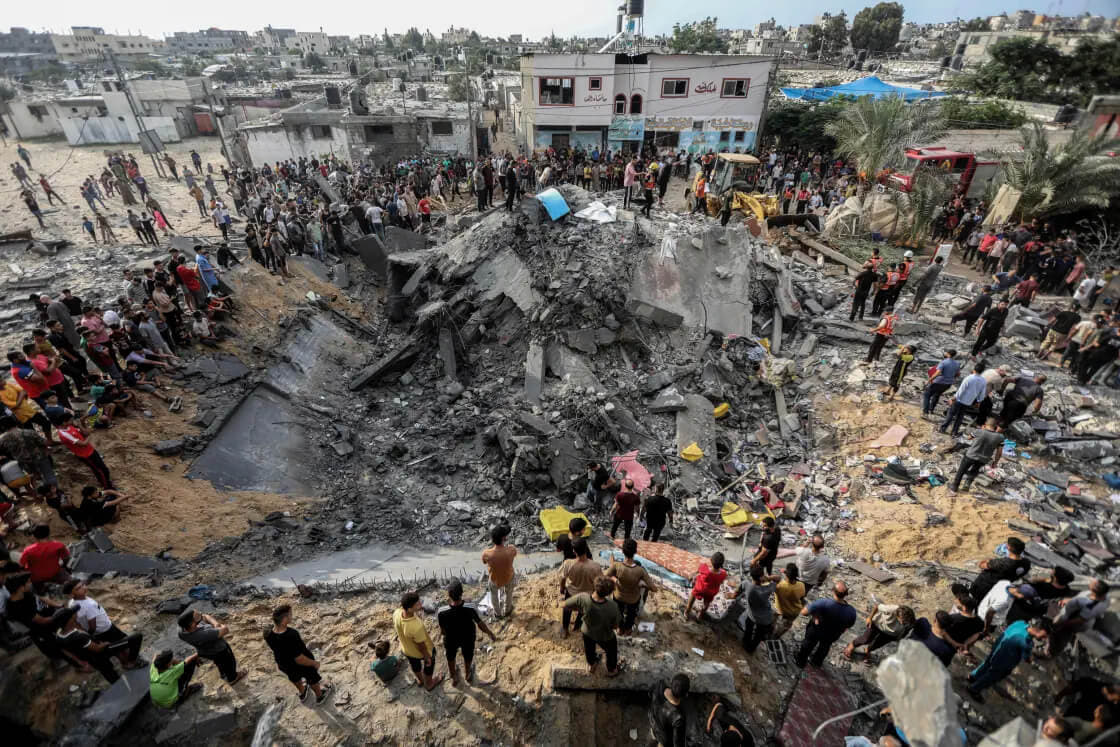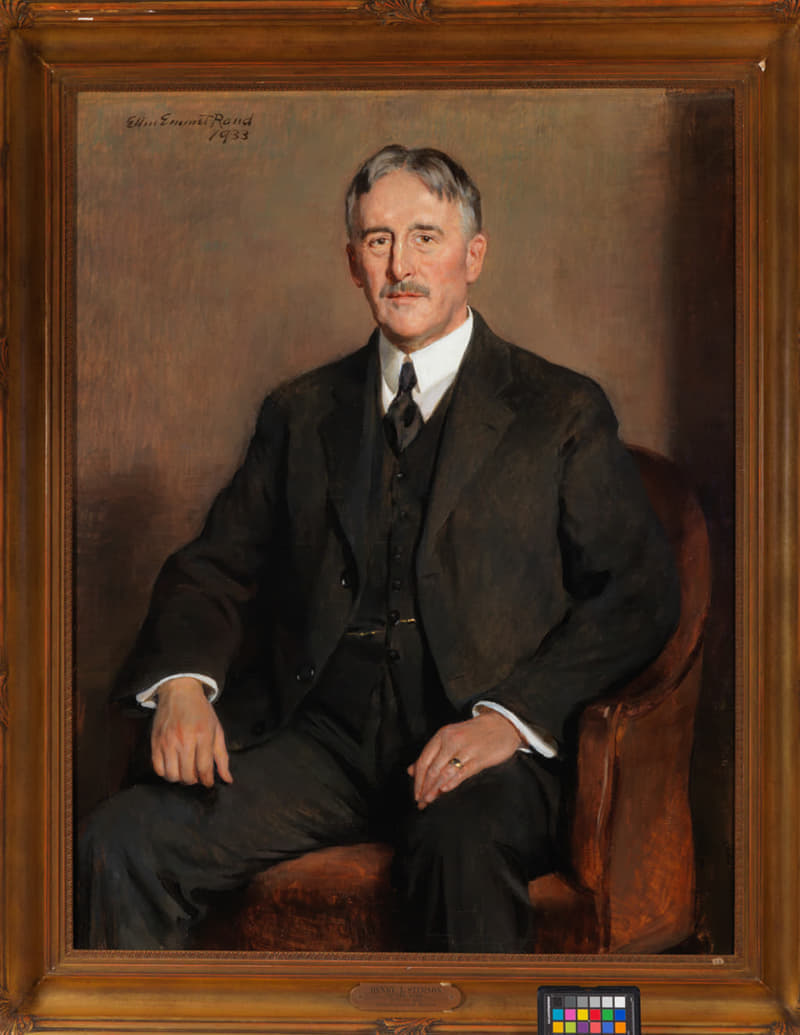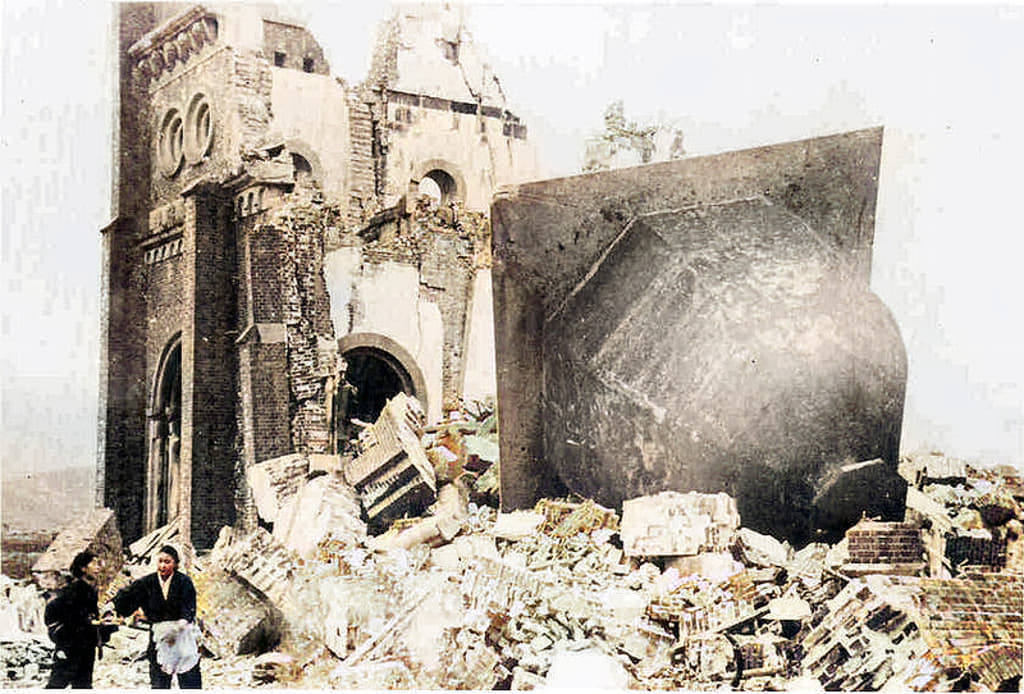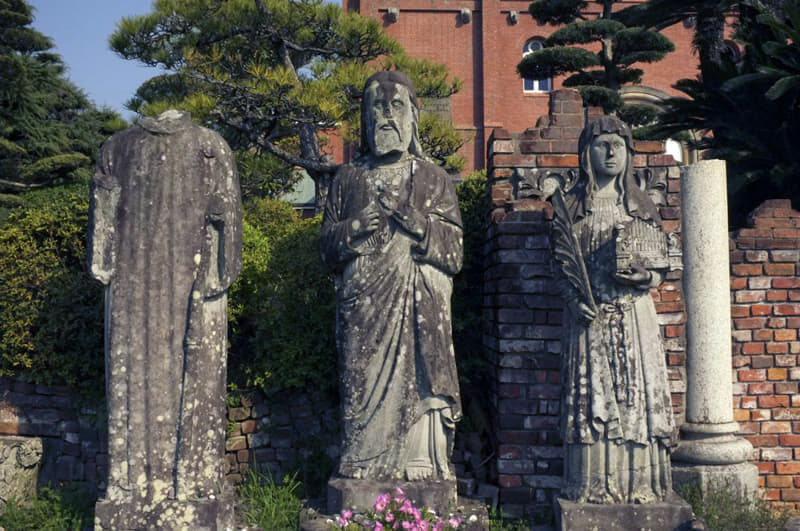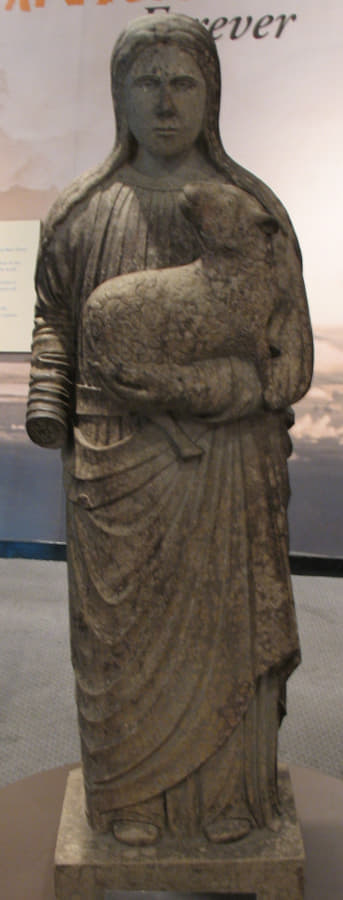Introduction
In Part One of “An Act of State Terrorism,” our article examining the decision by the United States to drop a plutonium bomb on the largest Catholic community in Japan in 1945, we explored five aspects of this tragedy and this crime.
We discussed the 400 year old Catholic heritage of Nagasaki; the frightful death toll and ghastly material devastation wrought by the detonation of the 21 kiloton Fat Man bomb over that city; the unresolved question of how Nagasaki appeared, suddenly, almost at the last minute, and by an anonymous hand, on the target list for nuclear incineration; the opposition of many American military leaders to the use of atomic weapons against civilians; and, finally, the false narrative of bomb proponents who claimed that the Soviet declaration of war against Japan was unexpected, reactive and opportunistic.
In Part Two, I propose to begin the examination of those, in the United States government, who were responsible for the unprecedented decision to terrify an enemy into surrender, by utilizing the then unimaginable destructive force of nuclear weapons, and using it on civilians, resulting in the deaths of perhaps two hundred thousand innocent human beings.
Our focus in this installment will be on the Cabinet official under whose authority the bomb was developed and deployed, the Secretary of War, Henry Stimson.
An Act of State Terrorism, Part Two
At the end of 1945, following the conclusion of the Second World War, the Armed Forces of the United States of America had eight five star officers, four Fleet Admirals — William Leahy, Ernest King, Chester Nimitz and William Halsey — and four Generals of the Army — George Marshall, Douglas MacArthur, Henry “Hap” Arnold and Dwight Eisenhower.
Leahy and MacArthur would later express moral objections to the atomic bombing of civilians. Halsey called it “a mistake.” Eisenhower thought the first use of such weapons by America was inexpedient. All, with the exception of Marshall, thought their use was unnecessary.
Even Army Chief of Staff George Marshall, who would later defend the dropping of the two atomic bombs, initially advocated for their deployment against military targets only. After the destruction of Hiroshima and Nagasaki, Marshall urged that the atomic bombing of cities be halted, as America’s limited supply of these new bombs needed to be conserved as potential tactical weapons, for battlefield use, in the invasion of Japan.
It was America’s political leadership, not its military and naval commanders, who wanted and decided to use nuclear weapons in 1945.
A Very Different Government
Hilaire Belloc warned of the danger of “reading history backwards,” of assuming that the standards, structures and practices of today obtained in the past. Compared to 2023, America had a profoundly different federal government in 1945.
At the end of the Second World War, the vast civilian architecture of the modern national security state had not yet been created. That creation would come in two phases, the first in the immediate post-war period, and the second, after the 9/11 attacks.
When the U.S. government considered the military application of atomic power in 1945, those advisory, policy making, and executive institutions so preeminent in our own time — the Central Intelligence Agency, the National Security Council and the Department of Defense — did not yet exist.
There was no Cabinet level Ambassador to the United Nations, and there was, certainly, no all powerful Assistant to the President for National Security Affairs, who could, like Henry Kissinger or Zbigniew Brzezinski, rival or displace the Secretary of State in influence.
The National Director of Intelligence and the Department of Homeland Security would be 21st century constructions.
That contemporary Colossus of centralized power, the Executive Office of the President, with its cabinet department size and its myriad councils and agencies, was unknown in 1945. Nor was there a prime ministerial White House Chief of Staff, who could treat Cabinet secretaries as functionaries, and control, or even restrict, their access to the President.
In 1945, the Vice-President had no voice in the counsels of the Executive branch, and no presence or staff in the White House. In fact, he had, virtually, no staff at all, only a small office in the Capitol, from which he would emerge to discharge his constitutional obligation to preside over the Senate.
As the 25th Amendment, governing presidential and vice-presidential succession, was only proposed after the assassination of John F. Kennedy in 1963, the office of Vice-President was vacant during the first Truman administration.
In the eighty-two days, from January 20 to April 12, 1945, during which time Harry Truman served as Vice-President of the United States, he only met with President Franklin Roosevelt, alone, on two occasions. On neither of those occasions, did FDR bother to tell him about the Manhattan Engineer District Project, a.k.a., the atomic bomb.
Three Civilian Advisors
At the end of the Second World War, the President of the United States had just three principal civilian advisors in matters of foreign policy and national defense. These were the Secretary of State, the Secretary of War, and the Secretary of the Navy.
Their significance in the government was underscored by their proximity to the President. Their offices were located in the Old Executive Office Building, colloquially referred to, simply, as the State, War and Navy Building — that great, 19th century Second Empire edifice next to the White House, and connected to it by an underground passageway. It is now called the Eisenhower Executive Office Building.
In 1945, the U. S. Secretary of State was James F. Byrnes. The Secretary of War was Henry L. Stimson, and the Secretary of the Navy was James Vincent Forrestal. Both Byrnes and Forrestal were baptized Catholics. Only one however, still adhered to the religion of his baptism.
The Grey Eminence
The actual management of the atomic bomb project was in the hands of the War Department.
Seventy-seven years old in the summer of 1945, Secretary of War Henry Stimson was the U.S. government’s most distinguished and experienced grey eminence. Harry Truman was the sixth American President whom he served.
By birth, ancestry, religion, economic status and education, Stimson was an archetypical member of the American nomenklatura, sometimes called the Eastern Establishment.
Born in New York City in September of 1867, to a family of pious Presbyterians, he was the son of a surgeon and the grandson of a banker. His father sent him to Phillips Andover Academy, Yale University (where he joined Skull and Bones) and Harvard Law School.
A successful Wall Street attorney with the white shoe firm of Root and Clark, Stimson, by the time he was in his mid-thirties, was earning an annual income of $20,000, the equivalent of nearly $700,000 per year today.
Appointed, by President Theodore Roosevelt, as United States Attorney for the Southern District of New York in 1906, Stimson served until 1909, prosecuting antitrust cases. In his only attempt at elective office, Stimson became, with Roosevelt’s endorsement, the Republican nominee for Governor of New York in 1910, losing in the general election to Democrat John Dix.
From 1911 to 1913, Stimson served in the Cabinet of President William Howard Taft as the U.S. Secretary of War, the same office he would hold thirty years later in the Second World War. As a Regular Army Colonel in the Field Artillery in the First World War, he spent nine months in France, from 1917 to 1918, at the American General Staff College in Langres.
After the war, Stimson resumed his law practice, was made a Brigadier General in the Reserves, and became, in 1921, one of the founders of the Council on Foreign Relations.
In 1927, President Calvin Coolidge named Stimson an Envoy Extraordinary to the Republic of Nicaragua — then a de facto American protectorate — to settle that country’s electoral dispute. Later that year, Coolidge appointed him Governor-General of the Philippines.
In 1929, President Herbert Hoover recalled Stimson to Washington to confer upon him the highest gift in the providence of the Presidency. Hoover appointed him U.S. Secretary of State.
Serving until the end of the Hoover Administration in 1933, Stimson was the American delegate to the London Naval Conference in 1930, and would later proclaim the Stimson Doctrine, a policy of sanctions and non-recognition, aimed at containing Japanese aggression in Manchuria.
In July of 1940, President Franklin D. Roosevelt, intent on running for an unprecedented third term, and seeking bi-partisan support for his foreign policy of all aid to Britain short of war, returned the 72 year old Henry Stimson, after an absence of 27 years, to the War Department.
For Roosevelt’s purposes, Stimson was an inspired choice. Although a prominent Republican with an impeccable reputation, Stimson was an internationalist, and therefore an interventionist, and more significantly, was an old retainer to the Oyster Bay branch of the Roosevelt family.
A Bureaucratic Interest
No cabinet official had a more compelling bureaucratic self interest in the successful use of atomic weapons than Henry Stimson. After all, he had just spent more than two billion, in 1940’s dollars, ($33 billion today) on the Manhattan Project, and he spent it surreptitiously, without the direct knowledge of Congress.
One of the congressional officials from whom he concealed the details of the project was the Chairman of the Senate Special Committee to Investigate the National Defense Program, the junior Senator from Missouri, one Harry S. Truman.
Stimson then spent another three billion dollars ($49 billion in today’s money) on the development and production of the delivery system for the atomic bomb, the Boeing B-29 Superfortress, the most expensive weapons system in the history of the planet up to that time.
The B-29 proved to be a spectacular triumph of American aircraft design and engineering, a veritable quantum leap in aviation technology. It remained a front line American aircraft into the jet age of the Strategic Air Command, and was the principal U.S. heavy bomber in the Korean War.
In the middle of World War II however, Stimson had no way of knowing that. So, hedging his bets against the possible failure of the B-29 program, he then spent another $124 million ($2 billion in 2023 dollars) on a second delivery system, the now forgotten Consolidated B-32 Dominator.
In total, Stimson’s War Department expended $84 billion, in real dollars, to develop and deliver the atomic bomb.
Far from being an enthusiast for his own creation, Stimson was afflicted with a moral ambivalence about the bomb that bordered on schizophrenia. In policy terms, Stimson’s position was one of protracted inconsistency about the use of the weapon.
The Targeting of Civilians
In May of 1945, the Truman Administration established an inter-departmental Committee, known as the Interim Committee on the Military Use of the Atomic Bomb, to formulate policy about the deployment of the bomb, and to craft public statements explaining its existence to the American people.
The Chairman of the Interim Committee was Henry Stimson. The Committee was advised by a technical body called the Scientific Panel.
From its very beginning, the committee determined that civilian losses concomitant with the use of the bomb were not to be viewed as collateral casualties. The bomb was specifically intended to be a terror weapon which explicitly targeted civilians and maximized civilian deaths.
The second of the committee’s first three recommendations, adopted unanimously and issued on June 1, 1945, was: “It should be used on a dual target plant surrounded by or adjacent to houses and other buildings most susceptible to damage;”
The Target Committee, headed by the Director of the Manhattan Project, Major General Leslie Groves, had already come to the same conclusion. On May 12, 1945, that committee decided that the bomb should be used against “important targets in an urban area of more than three miles diameter,” — area bombing on an immense scale.
On June 6, 1945, Stimson met with President Truman to discuss the Interim Committee recommendations. According to Stimson’s memorandum on the meeting, Truman, already briefed by his aide, (and soon to be Secretary of State) James Byrnes, expressed no concerns with the committee report, beyond what to tell the Russians in the upcoming Potsdam Conference.
Nor did Stimson register any objection to the targeting of homes in a nuclear attack. At the very end of the meeting, however, Stimson, in a reference to the conventional firebombing of Japanese cities, told Truman “I did not want to have the United States get the reputation of outdoing Hitler in atrocities.”
It makes no sense, of course, to support the atomic bombing of civilians while condemning conventional area bombing as Hitlerian. Was Stimson reluctant to challenge the findings of his own committee? Why did he not raise this issue in the committee which he chaired? Was this remark a subtle means of implanting doubt in Truman’s mind?
Stimson Begins To Dissent
Twelve days later, on June 18th, President Truman held a meeting at the White House, with both his military and civilian advisors, to discuss the invasion of Japan. While most of those present supported a landing in the Japanese Home Islands in November, Stimson, seconded by his Assistant Secretary of War, John McCloy, suggested that an invasion would solidify Japanese resistance in a fight to the death.
An even more dramatic intervention was made by Fleet Admiral William Leahy, who told the President that the unconditional surrender of Japan was not necessary to the successful conclusion of the war.
Truman, revealingly, told Leahy that he could leave the issue to Congress, but he could not change public opinion in this matter.
On July 2nd, Stimson sent a memorandum to the President, entitled a Proposed Program for Japan. It is a remarkable document. While arguing, ostensibly, against an invasion of Japan, Stimson raises issues directly related to the use of atomic weapons.
Stimson told Truman that Japan was under blockade, had no allies and no navy, and was increasingly vulnerable to air attacks. He went on to say, contrary to the pervasive racial hatred of the time, that “Japan is not a nation composed wholly of mad fanatics of an entirely different mentality from ours.”
Addressing the policy of unconditional surrender, Stimson asserted that a Japanese surrender could be facilitated if we “do not exclude a constitutional monarchy under her present dynasty.”
In a seeming repudiation of his own committee, Stimson concluded the memorandum by stating that “Our own bombing should be confined to military objectives as far as possible.”
Stimson would lose the first of these arguments, and only prevail, belatedly, in the second. The bomb would be used on civilians, and Truman would only agree to the preservation of the monarchy after the destruction of Nagasaki.
With the successful test of the atomic bomb at Alamogordo in New Mexico on July 16th, the bureaucratic momentum for its use became inexorable. By the beginning of August, 1945, Stimson, the Administration loyalist, was busy monitoring last minute preparations for the destruction of Hiroshima and Nagasaki.
Saving Kyoto, Sacrificing Nagasaki
Henry Stimson’s last known intervention about the use of the atomic bomb, prior to the bombings, was his direct appeal to President Truman on July 24th to spare the city of Kyoto, the historic center of Buddhism and Shintoism in Japan, by removing it from the target list. It was immediately thereafter that Nagasaki was added to the list.
Was Henry Stimson the anonymous decision maker who selected Catholic Nagasaki for destruction to save pagan Kyoto? The archival record offers no clues, but we do know that Stimson embraced all the prejudices of his time, his class, and his religious sect.
As a young lawyer in the 1890’s, Stimson was a committed “goo-goo,” a member of the Good Government Club of New York, dedicated to stamping out patronage and corruption in local government, i.e., Irish control of municipal politics.
Stimson entered government as an appointee and a disciple of Theodore Roosevelt, a President notorious for his nativism and bigotry. As a diplomat and colonial administrator, Stimson believed that Catholic Filipinos and Latin Americans were incapable of democratic self-government, requiring, instead, the firm hand of Anglo-Saxon tutelage.
Like every other rich WASP in the FDR Administration, Stimson had a visceral animus against the Catholic leader of Free France, once telling Harry Truman that Charles De Gaulle was “psychopathic.”
In his last public comments, a few months before his death in 1950, Stimson, in a letter to the editor of The New York Times, denounced Senator Joseph McCarthy.
The Tragedy of Henry Stimson
An attorney represents the position of his client. A mandarin — a high civil servant — learns the values of obedience, discretion, compliance with the institutional consensus, and acquiescence in decisions, once made.
Stimson was both of these in his long career. The tragedy of Henry Stimson was that he was inclined to do right, in a vague, Protestant/humanitarian sort of way, but lacked the moral clarity that the Catholic Faith would have imparted.
He had principles, and personal probity, but no concept of unbreachable moral prohibitions, rooted in Divine and natural law. In the end, everything was negotiable, where compromise was permitted and expected.
Like Pontius Pilate, Henry Stimson was morally discomforted by the decisions confronting him, and like Pilate, he preferred the acceptance of a crime to the uncertainties and unpleasantness of political discord.
On two occasions in his career, Stimson rejected the elite consensus. He argued against the vengeful Morgenthau Plan, which would have destituted the German people and depopulated the country by de-industrializing Germany.
Like General George Marshall, Stimson believed that American support for a Jewish National Home in Palestine would be inimical to U.S. interests in the Middle East.
On August 10, 1945, the day after the bombing of Nagasaki, Stimson, with the support of the Secretary of the Navy, James Forrestal, appealed to the President to halt all attacks, both atomic and conventional, on Japan, to give that country an opportunity to surrender.
Stimson and Colonel William H. Kyle (right) arriving at the Gatow Airport in Berlin, Germany to attend the Potsdam Conference (July 16, 1945). Source.
After the war, towards the end of his life, Henry Stimson’s institutional loyalties and ruling class sensibilities proved impossible to discard. In a February, 1947 article in Harper’s Magazine, Stimson not only defended the killing of innocent civilians in Hiroshima and Nagasaki, but assumed responsibility for carrying out the decision: “I approved four other targets including the cities of Hiroshima and Nagasaki.”
Ironically, Stimson, one of the few cabinet officials who expressed moral reservations about the killing of civilians in wartime, would, in this article written in his retirement, provide the official narrative justifying the use of atomic weapons on the innocent as “our least abhorrent choice.”
C. Joseph Doyle is the Executive Director of the Catholic Action League of Massachusetts. Doyle is also the Director of Communications for the Friends of Saint Benedict Center.
Featured: Henry Lewis Stimson, by Ellen Emmet Rand; painted in 1933.

